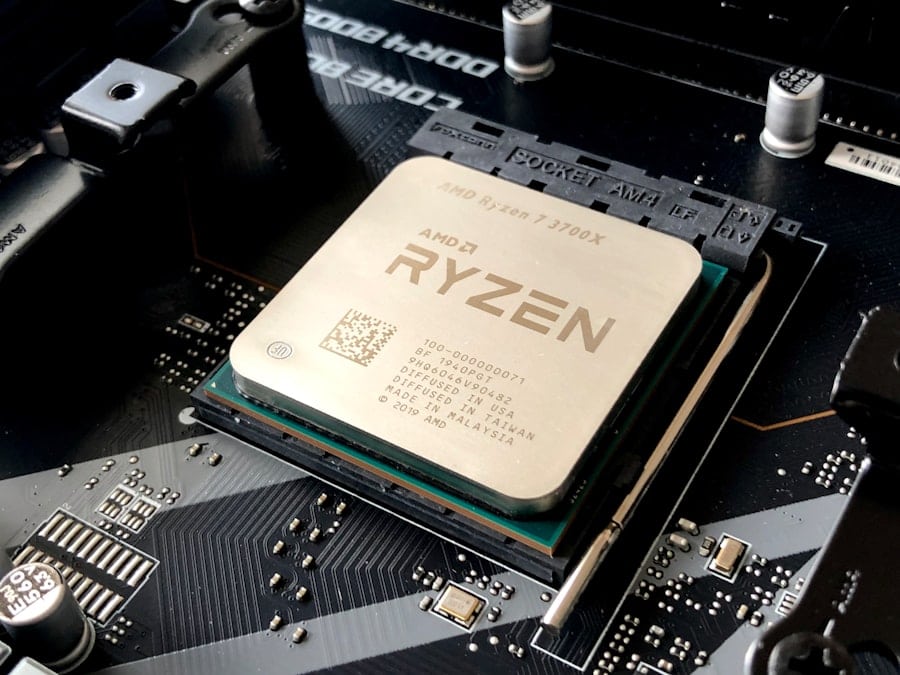Modular PC builds represent a significant shift in the way personal computers are designed and assembled. Unlike traditional systems, which often require users to replace entire units when a component fails or becomes outdated, modular builds allow for individual parts to be swapped out with relative ease. This approach not only enhances the longevity of the system but also empowers users to customize their machines according to their specific needs and preferences.
The core philosophy behind modularity is to create a more user-friendly experience, where upgrading or repairing a computer becomes a straightforward task rather than a daunting challenge. At the heart of modular PC builds is the concept of standardization.
This compatibility fosters a vibrant ecosystem of hardware options, allowing enthusiasts and casual users alike to tailor their systems for gaming, content creation, or general productivity. Furthermore, the rise of modular designs has led to innovations in cooling solutions, cable management, and even aesthetics, as manufacturers strive to create components that not only perform well but also look appealing in a transparent case.
Key Takeaways
- Modular PC builds allow for customization and easy upgrades, making them more versatile than traditional PCs.
- E-waste from discarded electronics is a growing environmental concern, with harmful materials ending up in landfills.
- Modular PC builds offer benefits such as reduced electronic waste, longer lifespan, and cost-effectiveness.
- By allowing for individual component upgrades, modular PC builds reduce the need for complete system replacements, thus reducing e-waste.
- The future of modular PC builds looks promising, with advancements in technology and a growing focus on sustainability.
The Environmental Impact of E-Waste
E-waste, or electronic waste, has emerged as one of the most pressing environmental challenges of our time. As technology advances at an unprecedented pace, millions of tons of discarded electronics end up in landfills each year. This waste not only occupies valuable land but also poses significant risks to human health and the environment.
Many electronic devices contain hazardous materials such as lead, mercury, and cadmium, which can leach into soil and water systems, causing long-term ecological damage. The improper disposal of e-waste can lead to serious health issues for communities living near landfills or informal recycling operations. The scale of the e-waste problem is staggering.
According to the Global E-waste Monitor 2020 report, approximately 53.6 million metric tons of e-waste were generated globally in 2019, with only 17.4% being recycled properly. This trend is expected to worsen as consumer demand for electronics continues to rise. The rapid obsolescence of devices—driven by both technological advancements and marketing strategies—exacerbates the issue, leading consumers to discard functioning devices in favor of newer models.
Addressing the e-waste crisis requires a multifaceted approach that includes better recycling practices, consumer education, and innovative product designs that prioritize sustainability.
The Benefits of Modular PC Builds

Modular PC builds offer a plethora of advantages that cater to both casual users and tech enthusiasts. One of the most significant benefits is the ease of upgrading components without needing to replace the entire system. For instance, a gamer may choose to upgrade their graphics card to keep up with the latest titles without having to invest in a new motherboard or power supply.
This flexibility not only saves money but also extends the lifespan of the overall system, reducing the frequency of complete replacements. Another key advantage is the potential for enhanced performance through customization. Users can select components that best meet their specific requirements—whether that’s prioritizing processing power for video editing or maximizing graphics capabilities for gaming.
This level of personalization allows individuals to create a machine that truly reflects their needs and preferences. Additionally, modular builds often come with improved thermal management solutions, as users can choose cooling systems that best suit their configurations, leading to better performance and longevity.
How Modular PC Builds Reduce E-Waste
The modularity inherent in these builds plays a crucial role in mitigating e-waste generation. By allowing users to replace individual components rather than entire systems, modular builds significantly reduce the volume of discarded electronics. For example, if a user’s hard drive fails, they can simply replace that single component instead of discarding an entire computer that may still have functional parts.
This targeted approach not only conserves resources but also minimizes the environmental impact associated with manufacturing new devices. Moreover, modular designs encourage manufacturers to create more durable and repairable products. As consumers become increasingly aware of sustainability issues, there is growing demand for products that can be easily repaired or upgraded.
Companies that embrace modularity are likely to see increased customer loyalty as users appreciate the ability to maintain their systems over time. This shift in consumer behavior can lead to a reduction in overall production rates, further decreasing the strain on natural resources and reducing e-waste.
The Future of Modular PC Builds
The future of modular PC builds appears promising as technology continues to evolve and consumer preferences shift towards sustainability. As awareness of environmental issues grows, more manufacturers are likely to adopt modular designs in their product lines. This trend is already evident in various sectors beyond personal computing; for instance, modular smartphones and tablets are gaining traction as consumers seek devices that can be easily upgraded or repaired.
For example, developments in 3D printing could allow users to create custom components tailored specifically for their needs. This could further enhance the personalization aspect of modular builds while also reducing reliance on mass production methods that contribute to e-waste.
As the industry moves forward, collaboration between manufacturers and consumers will be essential in shaping a future where modularity becomes the norm rather than the exception.
Tips for Building a Modular PC

Building a modular PC can be an exciting yet daunting task for newcomers. To ensure a smooth experience, it’s essential to start with thorough research on compatible components. Websites like PCPartPicker provide valuable resources for checking compatibility between different parts and help users stay within budget while selecting high-quality components.
Understanding specifications such as form factors (ATX, Micro-ATX) and power requirements will prevent potential issues during assembly. Another important tip is to invest in quality tools and accessories that facilitate the building process. A good set of screwdrivers, anti-static wrist straps, and cable management solutions can make a significant difference in both ease of assembly and the overall aesthetics of the build.
Additionally, taking time to plan cable routing before securing components can lead to better airflow and easier access for future upgrades or repairs. Finally, don’t hesitate to consult online forums or video tutorials; these resources can provide invaluable insights from experienced builders who have navigated similar challenges.
The Importance of Sustainable Technology
Sustainable technology is becoming increasingly vital as society grapples with climate change and resource depletion. The push for greener alternatives is not just about reducing emissions; it encompasses a holistic approach that considers the entire lifecycle of products—from production and usage to disposal. In this context, modular PC builds exemplify how technology can evolve to meet sustainability goals by promoting longevity and reducing waste.
Moreover, sustainable technology fosters innovation by encouraging companies to rethink their design processes and materials used in manufacturing. For instance, many manufacturers are now exploring eco-friendly materials and energy-efficient production methods that minimize environmental impact. By prioritizing sustainability in technology development, we can create systems that not only meet consumer demands but also contribute positively to our planet’s health.
Embracing Modular PC Builds for a Greener Future
As we navigate an increasingly digital world, embracing modular PC builds offers a pathway toward a more sustainable future. By prioritizing designs that allow for easy upgrades and repairs, we can significantly reduce e-waste while empowering consumers with greater control over their technology choices. The benefits extend beyond individual users; as more people adopt modular systems, manufacturers will be incentivized to innovate further in sustainable practices.
In this context, modularity is not merely a trend but a necessary evolution in technology design that aligns with global sustainability goals. By fostering an environment where longevity and repairability are prioritized, we can collectively work towards minimizing our ecological footprint while enjoying the benefits of cutting-edge technology. Embracing modular PC builds is not just about enhancing personal computing experiences; it’s about making conscious choices that contribute to a healthier planet for future generations.
In a recent article discussing the impact of modular PC builds on reducing e-waste, it is important to consider the environmental implications of electronic devices. Another interesting read on this topic is

